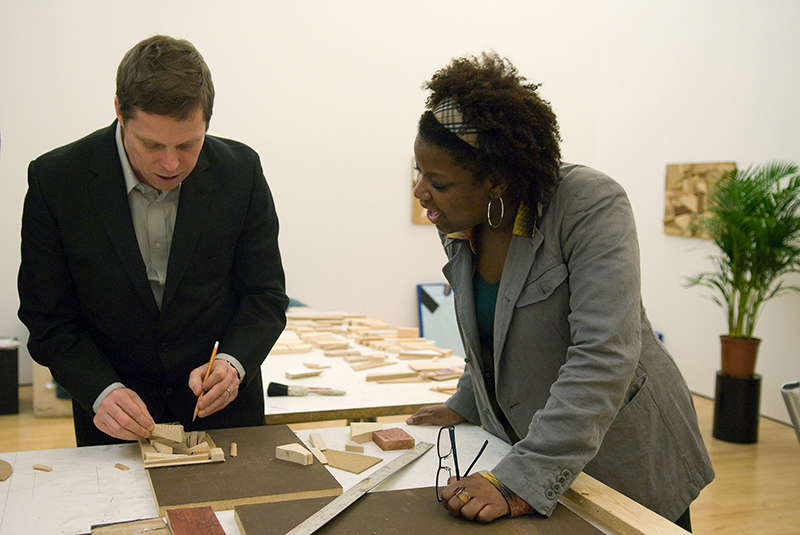Post Post Studio

Under the careful hand of the artist, the studio can be a magical place where materials, images, and even people come to life. Pygmalion’s statue, Frankenstein’s monster, Rrose Selavy and Cindy Sherman are but four examples of the primordial power of the artist’s lair.
Donelle Woolford is another entry to this line of avatars, an artist spawned from an admixture of postcolonialism, narrative license, craftsmanship and branding. She was originally employed as my studio assistant, where she stumbled onto a wooden collage that had an eerie resemblance to Cubism. Technically she was making the collage for me—it was, in the parlance, a “work for hire”—but it seemed better suited to her character than mine. One work led to another, a point of view and a personal history took shape, and in three short years she was a full-fledged artist working in a studio of her own.
In the 1990s, a generation of artists came to be known as having “post studio” practices because they did not make art by conventional means. Rather, they made work only when someone invited them to do so, usually in a faraway city. Their practice consisted of visiting the location, conceiving of an artwork, and then having the logistical expenditure of producing the artwork (or some version of it) assumed by the host institution. In such an environment, the studio came to be seen as an anachronism ill-suited for the “just in time” production economics of the international biennial circuit. The studio was a place where paintings and objects got made, pejorative terms if there ever were ones.
In this decade, a few artists like Pawel Althamer, Tino Sehgal, Artur Zmijewski and myself are trying to rejuvenate the studio as a site of production by enlisting others to inhabit it for us, thereby outsourcing the labor of making art as well as the burden of authenticity. In what could be called a post post-studio practice, the idea of the studio artist makes a comeback, only now the artist is a paid actor performing on a set that looks just like an artist’s studio. If the work that artist makes (or pretends to make) is good, then it doesn’t matter whether the artist is real or not. Nor does it matter whether the artist’s life story is borne out in the work they produce, or whether it is borne out to such an absurd degree as to evoke suspicion. At this point in the evolution of identity politics, social networking, and the presentation of self in everyday life, the art world obligation of having to be who you appear to be is obsolete.
First published in The Studio Reader: On the Space of Artists, Michelle Grabner and Mary Jane Jacob, eds., Chicago: University of Chicago press, 2010.
For related content see the 8 Questions in 4 Parts, this press release, and Dick’s Last Stand